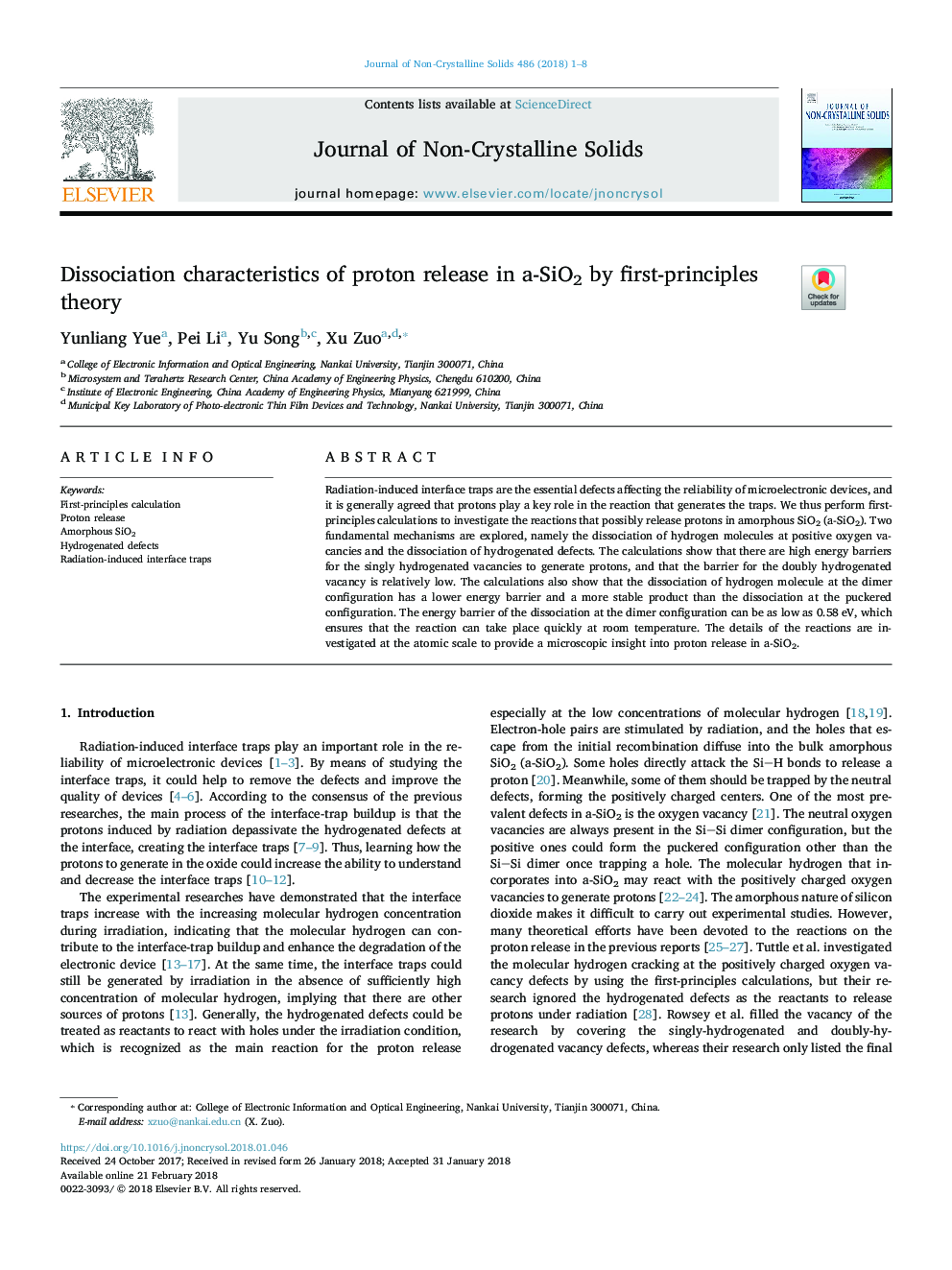| Article ID | Journal | Published Year | Pages | File Type |
|---|---|---|---|---|
| 7900044 | Journal of Non-Crystalline Solids | 2018 | 8 Pages |
Abstract
Radiation-induced interface traps are the essential defects affecting the reliability of microelectronic devices, and it is generally agreed that protons play a key role in the reaction that generates the traps. We thus perform first-principles calculations to investigate the reactions that possibly release protons in amorphous SiO2 (a-SiO2). Two fundamental mechanisms are explored, namely the dissociation of hydrogen molecules at positive oxygen vacancies and the dissociation of hydrogenated defects. The calculations show that there are high energy barriers for the singly hydrogenated vacancies to generate protons, and that the barrier for the doubly hydrogenated vacancy is relatively low. The calculations also show that the dissociation of hydrogen molecule at the dimer configuration has a lower energy barrier and a more stable product than the dissociation at the puckered configuration. The energy barrier of the dissociation at the dimer configuration can be as low as 0.58â¯eV, which ensures that the reaction can take place quickly at room temperature. The details of the reactions are investigated at the atomic scale to provide a microscopic insight into proton release in a-SiO2.
Related Topics
Physical Sciences and Engineering
Materials Science
Ceramics and Composites
Authors
Yunliang Yue, Pei Li, Yu Song, Xu Zuo,
